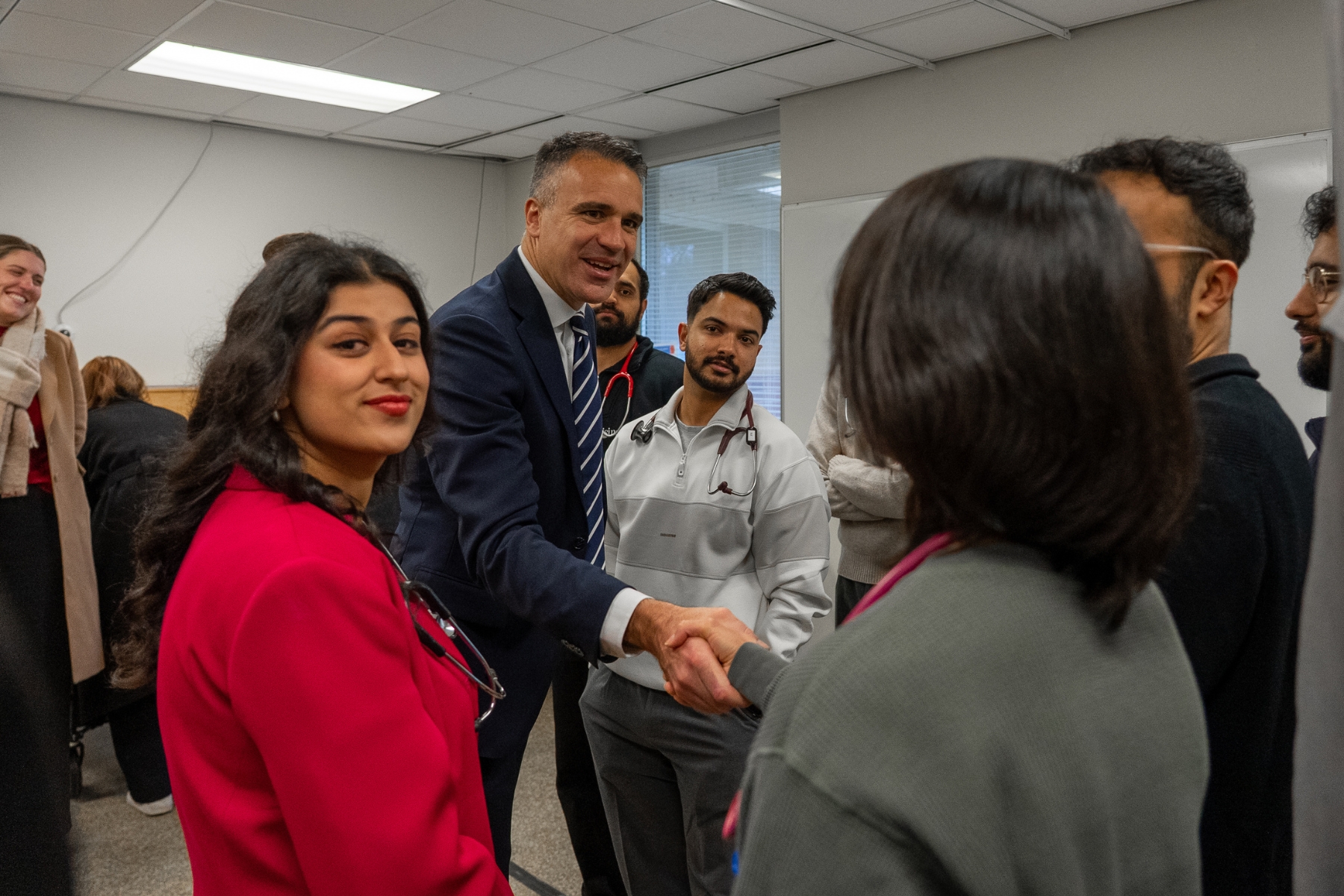Doctors accept pay deal: ‘We’ll take what we can get’
Doctors have accepted a new pay deal after a “difficult” months-long negotiation. Meanwhile, talks continue with the country’s lowest-paid medical staff.

Trainee medical officers and senior registrars will see a $4050 base wage increase under an enterprise agreement achieved today, but one medical student said it’s not exactly what they asked for.
“Within this enterprise agreement, it isn’t exactly what we asked for in terms of the increase in the base salary and also in the increase in the professional development money,” Flinders Medical Student Society head Angelina Aurora said on Monday.
“So, it would have been great to see that, but we’ll take what we can get.”
Aurora is from New South Wales, but studies at Flinders University and will join the Central Adelaide Local Health Network at the Royal Adelaide Hospital next year.
She said between SA and NSW, SA was the “better option” as the second lowest paying state for first year graduates, following NSW.
Aurora said this deal would pull SA out of that rank and level the playing field for graduate pay compared to other states.
“I think with this enterprise agreement being negotiated, it’s definitely more attractive for medical students to remain in South Australia,” she said.
As well as the base wage boost, a $1500 hike to professional development payments would see junior doctors in accredited training programs get $10,000, up from $8500.
You might like
The agreement also included a total compounded wage rise of 13 per cent, with 3.5 per cent backdated to April 2025, 3.35 per cent in April 2026 and 2027 and then 3 per cent in April 2028.
This was the offer the state government brought to the table in late July, which prevented a full-day strike.
Premier Peter Malinauskas, Industrial Relations Minister Kyam Maher and Health Minister Chris Picton announced the deal at Flinders Medical Centre on Monday morning.
However, talks continue with some of the state’s lowest paid health workers desperate for a pay rise.
In May, 80 Flinders Medical Centre workers across theatres, patient transport, cleaning, and sterilisation departments took stop-work action as part of a campaign for their own pay deal.
These medical staff, who are covered by the United Workers Union, said they were also paid 20 per cent less than workers doing the same job interstate.
A cleaner in an SA hospital earns $1095 per week, compared to a WA hospital cleaner earning $1324, an almost $12,000 difference per year.
The Union’s SA State Secretary and National Public Sector Director, Demi Pnevmatikos, said these workers also played a key part in solving problems across the health sector.
“If you want to stop the ramping crisis, you need to solve the staffing crisis,” she said.
“United Workers Union members provide the vital services that keep the whole hospital system running – cleaning rooms, providing food, moving patients, cleaning laundry and sterilising operating equipment.
Stay informed, daily
“You can’t accept people into hospitals if you have bed block because no one will work in the hospital system for $28 or $30 an hour.
“Our members – the lowest-paid in the hospital system – are continuing to fight for a pay rise because they are sick of being paid 20 per cent less than workers in other states who are doing exactly the same job.”
Pay disparity between states has been a key theme of pay negotiations with other unions across the health sector this year.
Reports earlier this year revealed uncompetitive pay and conditions drove a shortage in psychologists, which was later addressed in a first-of-its-kind standalone allied health deal struck between the Health Services Union and the state government in early July.
The Premier said today the government was ready to make a new offer to the nurses’ union on Wednesday and talks were continuing with other health groups.

Aurora said the negotiation period for the doctors’ deal was “difficult”.
“Obviously, there’s more room to grow, and we’ll never say that it’s enough, because the work that a junior doctor does is significant, and as compared to other professions, we’re still behind,” she said.
“But I would say that this is a great step in the right direction, and it has taken quite a while to get here, but we’re confident that hopefully we’ll get further and further into getting a higher rate.”
Malinauskas said that “getting a balance right” in negotiations was important, as is balancing the interests of workers and taxpayers.
“We’re obviously recruiting hundreds and hundreds of doctors above attrition; we want to make sure they’re well paid,” Malinauskas said.
He said the initial call from some doctors was for a 30 per cent wage increase over three years.
“A 30 per cent wage increase over three years for someone over a million dollars a year is huge money, and that just wasn’t sustainable in a budget position,” he said.
“Where we’ve landed is something really quite appropriate, where all our doctors get a real wage increase, that is a wage increase over and above the rate of inflation, but a particularly strong boost to junior doctors that weren’t falling behind some of the levels of junior pay we see nationally.”
72 per cent of South Australian Salaried Medical Officers Association (SASMOA) members voted in favour of the deal.








